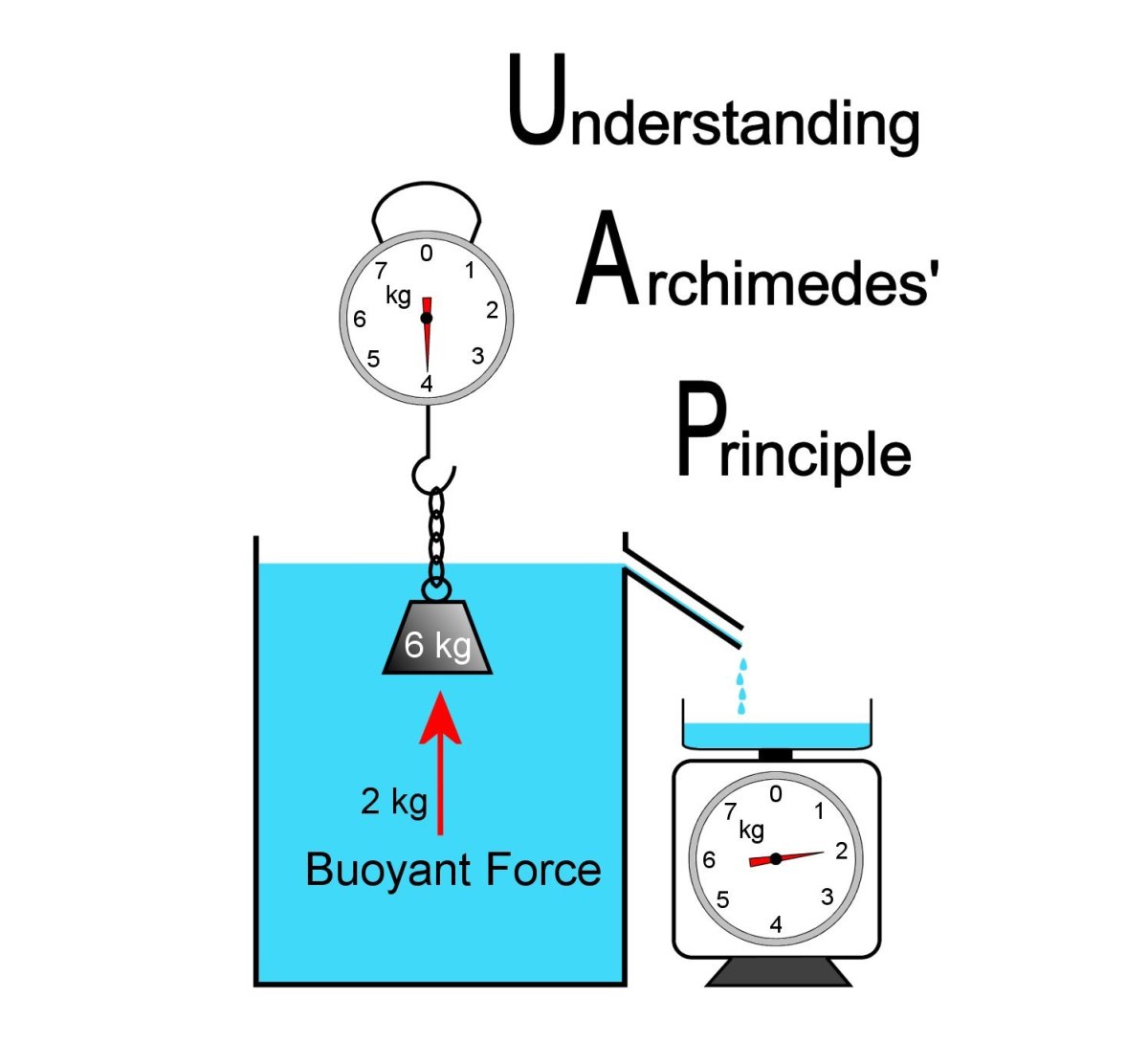

Note: You can enter whatever variables you know, and the calculator will compute the rest. The calculator will display the volume of the fluid displaced (2030 cm 3) and the buoyant force (19.89 N). If the height of the water inside the container changes by 2.86 cm, we can calculate the buoyant force as:Ĭlick on the Advanced mode button beneath the calculator and type the change in the height of the fluid (2.9 cm) and surface area of the fluid (700 cm 2).Įnter the true mass of the object (5 kg). While we have been writing specifically about water, the only thing in the analysis that depends on the identity of the incompressible fluid is the density. Suppose, 5N water is displayed by the stone. Substituting this expression for the mass of the slug into equation 33A.1 yields. Let us consider, a stone (weight 15N) is immersed in water.

A simpler method follows from the Archimedes principle, which states that the buoyant force exerted on a body immersed in a fluid is equal to the weight of the fluid the body displaces. Let us consider another example, where we drop a 5 kg rock into a cylindrical container with a base surface area of 700 cm 2. Archimedes’ principle states that: When an object is fully or partially immersed in a fluid, it experiences an upthrust which is equal to the weight of the liquid displaced by that object. Although calculating the buoyant force in this way is always possible it is often very difficult. It will also show the buoyant force acting on the rock as 1.96 N and a message whether the rock will float or sink. The Archimedes' principle calculator will display the density of the rock as 2.70 g/cm 3 and the volume of the rock as 200 cm 3. (b) Archimedes' principle as a law of Nature: the idea that. For Archimedes principle to hold for an object, this position demands that the object is not in contact with the bottom. You can also enter the density of the fluid manually. Archimedes' principle as a consequence of pressure: the idea that Archimedes' principle is derived from the pressure differences acting on an object in a fluid. He invented the Archimedean screw, he is reputed to have. He was born about 287 BC and died about 212 BC. Archimedes was a Greek scientist who lived in Syracuse, Sicily. Using the drop-down menu, choose fluid type as water. The most important thing about Archimedes’ principle is to get the apostrophe in the right place and to spell principle correctly. We will calculate the average density of this rock as follows:Įnter the true mass and the apparent mass of the rock as 540 g and 340 g in the respective fields. Let the true mass (mass in the air) and apparent mass (when immersed in water) of a rock be 540 g and 340 g, respectively. In this section, we will try to determine the density of an unknown object using our Archimedes' principle calculator. published 26 April 2017 A statue of Archimedes in a bathtub demonstrates the principle of the buoyant force.


 0 kommentar(er)
0 kommentar(er)
